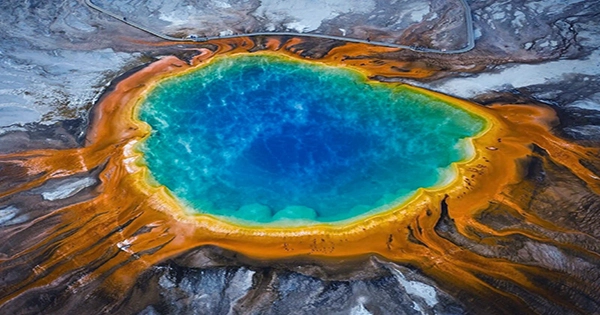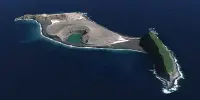Hundreds of kilometers underneath Yellowstone’s supervolcano and the larger Western United States region is a huge lump of liquidized, carbon-rich material. It is enormous, covering an area of 1.8 million square kilometers (about 700,000 square miles). It is boiling up in the upper mantle, the section of the globe that is a partially molten, churning mass of flaming destruction.
It consists largely of molten carbonates, a class of rock that contains a lot of carbon. In fact, this carbon reservoir is so large that it has fundamentally altered how scientists think about the carbon cycle.
In 2011, around 10 billion tonnes of carbon were released into the atmosphere, primarily as a result of human activities (about 11 billion tons). The upper mantle is thought to contain 10,000 times more carbon than this, mostly in the form of trapped carbon dioxide gas, according to this recently discovered reservoir.
According to main co-author Sash Hier-Majumder, a senior lecturer in geophysics at Royal Holloway, “releasing just 1% of this CO2 into the atmosphere will be the equivalent of burning 2.3 trillion barrels of oil.”
That is nearly 325 times more than what the United States uses in oil each year. There is no need to be concerned, despite the fact that this carbon will gradually rise to the surface as a result of volcanic eruptions. It will have a negligibly small impact on the rate of climate change we are currently seeing, which is 170 times quicker than what would be predicted if humans were not involved, according to recent research.
A team from London’s Royal Holloway University describes how they discovered the carbonate monster beneath our feet using a vast network of seismic sensors in a paper published in the journal Earth and Planetary Science Letters.
Seismic waves pass through a range of materials at various speeds and angles. This means that scientists can use these waves to infer the composition of the planet’s interior, and this astounding discovery was made possible by the newly installed, massive sensor network.
Hier-Majumder continued, “Under the western US is a large subsurface partially-molten deposit of liquid carbonate. It is the result of one of the Pacific Ocean’s tectonic plates being pushed underneath the western United States and partially melting due to the presence of gases like CO2 and H2O in the minerals that are dissolved in it.
The region above the descending plate typically experiences a very intricate, layered kind of melting as it dehydrates when one tectonic plate is driven under another during a process known as subduction. In the end, this results in massive amounts of thick, gaseous magma, which creates some of the most explosive volcanoes.
The Cascade Arc and Mount St. Helens are also excellent instances of this subduction-zone volcanism. Occasionally, though, a very peculiar type of melt would show up in the mixture; in this case, a lot of carbon-rich rocks were added to the upper mantle.
Carbon-rich magmas often create extraordinarily fluid, extremely “cold,” black-and-white carbonatite lava during the eruption phase. This kind of eruptive activity is present in a number of volcanoes in the East African Rift, resulting in some very surreal landscapes.
There is currently no visible indication that carbonatite volcanoes will suddenly appear in the Western US; rather, it is more likely that very gassy, “traditional” explosive eruptions will occur.
But hey, you never know; the planet might surprise you — or your ancestors, at any rate — with its peculiar volcanic ways after a few tens of millennia.
















